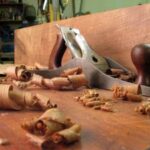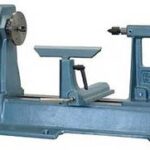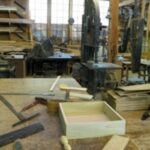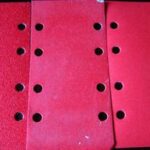A woodworking lathe is the most difficult of all the woodworking machines in the shop to learn how to use correctly. This doesn’t mean that you should for go purchasing one. With proper instruction and a lot of practice you can do some very amazing things with a wood lathe. The big advantage of a wood lathe is you can do an entire project in just a couple of hours.
To start you need to familiarize yourself with the parts of the wood lathe. Wood is normally mounted on a lathe between centers. That would be between the headstock and the tailstock. The headstock does the actual turning of your stock and the tailstock supports the piece. The headstock is equipped with a drive center which digs into the wood. There are four prongs in the drive center and a point. The prongs dig in your wood and do the actual turning while the point is just for centering. The tailstock is equipped with just a pointed center. It keeps the wood centered and applies a small amount of pressure toward the headstock so the drive center stays in the wood.
The bed of the lathe consists of two metal rails called ways. The headstock is usually directly connected to the ways whereas the tailstock can slide along the ways to accommodate different wood lengths.
When a piece of wood is mounted between the head and tail of the lathe this is called turning between centers or spindle turning. Examples of spindle turnings would be a table leg or a stair spindle. Even a simple pen is a spindle turning. A pen is not a spindle but it is turned between centers so it is a spindle turning.
The second type of woodturning is called faceplate turning. Here a chunk of wood is screwed to a faceplate that gets connected to the headstock. The tail stock is not used in faceplate turning unless it is brought up to add a bit of additional support. An example would be a wooden bowl. To turn a wood bowl a piece of wood is connected to a faceplate. The tailstock can be used to support the piece while the outside of the bowl is being shaped but when the inside of the bowl needs to be turned the tailstock has to be moved out of the way.
There are some turnings that are both faceplate and spindle turnings. A good example would be a wood goblet. A goblet is started between centers and roughed out. Then the bottom is connected to a faceplate or more commonly to a scroll chuck. Once it is in the chuck it is a faceplate turning.
The tools for the two types of turning are also a bit different. In spindle turning you would use a spindle gouge whereas the similar tool in faceplate turning is called a bowl gouge. A lot of the tools are used in both types of turnings. You would never normally use a skew chisel in faceplate turning but its point lends it to being a very good tool for detail lines in a bowl rim. It takes experience to learn which tool to use just like a golfer knows which iron to choose for a certain shot.
Most new woodturners go overboard buying tools but in reality for basic woodturning you only need a spindle gouge, skew chisel, a parting tool and a round nose scraper. If your going to do bowls add a bowl gouge.
A word of warning. Woodturning is very addictive. If you enjoy doing flat woodworking don’t buy a wood lathe because once you start woodturning you won’t do anything else.






